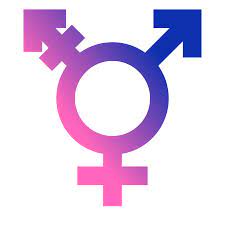When talking about hormones, estrogen and progesterone often steal the spotlight, especially when it comes to women’s health. These two hormones play key roles in regulating various bodily functions, particularly in the reproductive system. Understanding their functions not only helps us appreciate how our bodies work but also sheds light on common health issues that many women face. So, let’s dive into the fascinating world of estrogen and progesterone and uncover what they do!
What Are Estrogen and Progesterone Anyway?
Estrogen and progesterone are steroid hormones primarily produced in the ovaries. Estrogen is a group of hormones that include estradiol, estrone, and estriol, playing a vital role in the development of female reproductive tissues and secondary sexual characteristics. On the other hand, progesterone is often referred to as the "pregnancy hormone" because of its critical role in regulating the menstrual cycle and maintaining early stages of pregnancy. Both hormones work together to ensure the reproductive system functions smoothly.How Does Estrogen Affect Mood
These hormones are not just limited to reproductive health, though. They also play significant roles in other systems throughout the body, including bone health, cardiovascular function, and even the brain. Together, estrogen and progesterone help maintain a delicate balance that’s crucial for overall well-being. Understanding what they are is the first step in appreciating their far-reaching impact.
The Role of Estrogen in the Female Body
Estrogen is responsible for a wide array of functions in the female body, ranging from regulating the menstrual cycle to promoting the development of secondary sexual characteristics like breast development and a wider pelvis. This hormone also plays a critical role in the growth and maintenance of the uterine lining, which is essential for a possible pregnancy. Additionally, estrogen is involved in bone density, helping to protect against osteoporosis, and affects how fat is distributed in the body.
Beyond physical health, estrogen has a relationship with emotional well-being too. It has been shown to influence mood and cognitive functions, such as memory and learning. However, when estrogen levels fluctuate—like during puberty, pregnancy, or menopause—women may experience mood swings or other emotional symptoms. Understanding estrogen’s diverse roles helps underscore its importance in maintaining a balanced and healthy lifestyle.
How Progesterone Supports Reproductive Health
Progesterone is crucial for reproductive health, primarily preparing the uterus for potential pregnancy after ovulation. After the ovary releases an egg, progesterone is secreted to thicken the uterine lining, making it a suitable environment for a fertilized egg to implant. If pregnancy does not occur, progesterone levels drop, leading to menstruation. This cyclical nature is essential for a woman’s reproductive system to function effectively.
In addition to its role in the menstrual cycle, progesterone also helps maintain a healthy pregnancy. It supports the developing fetus by maintaining the uterine lining and preventing uterine contractions during early pregnancy. This hormone also helps modulate the immune response, allowing the body to accept the growing fetus as a "foreign" entity without rejecting it. The balance between progesterone and estrogen is vital for optimal reproductive health.
The Menstrual Cycle: Estrogen and Progesterone’s Dance
The menstrual cycle is like a beautiful dance between estrogen and progesterone. The cycle typically lasts around 28 days, but it can vary from person to person. In the first half of the cycle, known as the follicular phase, estrogen levels rise as the ovaries prepare to release an egg. This increase in estrogen also stimulates the thickening of the uterine lining in anticipation of a possible pregnancy.
Once ovulation occurs, the second half of the cycle, known as the luteal phase, kicks in. During this phase, progesterone takes center stage. It helps to maintain the thickened uterine lining while estrogen levels also rise slightly. If fertilization doesn’t occur, progesterone levels drop, leading to menstruation. This synchronized interplay ensures the cycle runs like clockwork, ready for another round.
What Happens During Pregnancy? Hormones at Work!
During pregnancy, both estrogen and progesterone levels soar to support the growing fetus. Estrogen aids in the development of the placenta and increases blood flow to the uterus, ensuring that the baby receives enough nutrients. It also plays a role in developing breast tissue in preparation for breastfeeding. On the other hand, progesterone maintains the uterine lining, preventing contractions that could lead to premature labor.
These hormonal changes can also lead to various pregnancy symptoms, like nausea or mood swings. As the pregnancy progresses, estrogen and progesterone levels will continue to fluctuate, impacting everything from physical changes in the body to emotional states. Understanding how these hormones work during pregnancy can help expectant mothers navigate the journey with more confidence and awareness.
The Impact of Estrogen and Progesterone on Mood
The influence of estrogen and progesterone extends beyond physical health—it also greatly affects mood and emotional well-being. Fluctuations in these hormone levels are often linked to mood swings, anxiety, and even depression. For instance, many women experience premenstrual syndrome (PMS), where hormonal changes lead to irritability, sadness, or anxiety in the days leading up to menstruation.
Interestingly, some studies suggest that estrogen can have a positive impact on mood regulation by increasing serotonin levels, a neurotransmitter associated with feelings of happiness and well-being. Conversely, low levels of estrogen and progesterone during menopause can lead to increased mood disturbances. Recognizing these connections can empower individuals to seek appropriate support during hormonal fluctuations.
Common Issues: Imbalances and Their Effects
Hormonal imbalances involving estrogen and progesterone can lead to a variety of health issues. For example, high levels of estrogen and low levels of progesterone can result in conditions such as endometriosis or uterine fibroids, both of which can cause painful symptoms. Similarly, low estrogen levels can lead to osteoporosis and increased risk of fractures, especially in postmenopausal women.
Additionally, imbalances can affect not only physical health but also emotional well-being. Women may experience mood swings, fatigue, weight gain, and sleep disturbances due to hormonal fluctuations. Understanding these imbalances can help individuals seek the right treatments or lifestyle adjustments to restore hormonal equilibrium.
Tips for Maintaining Hormonal Balance Naturally
Maintaining hormonal balance is crucial for overall health and well-being. One effective approach is to focus on nutrition. A balanced diet rich in whole foods, such as fruits, vegetables, whole grains, and healthy fats, can provide the necessary nutrients for hormone production and regulation. Incorporating foods high in phytoestrogens, like flaxseeds and soy products, can help balance estrogen levels naturally.
Regular exercise is another key component of hormonal balance. Physical activity helps regulate body weight, reduce stress, and promote better sleep—all factors that contribute to hormonal health. Additionally, incorporating stress-reducing practices such as yoga, meditation, or mindfulness can help keep cortisol levels in check, further promoting a healthy hormonal environment.
Understanding the roles of estrogen and progesterone is vital for recognizing how these hormones influence not only reproductive health but overall well-being. From regulating the menstrual cycle to impacting mood and emotional health, these hormones are central to many bodily functions. By staying informed and proactive about maintaining hormonal balance, individuals can navigate the ups and downs of life with greater ease and confidence. Whether through diet, exercise, or stress management, there are many ways to support your body’s natural rhythms.


